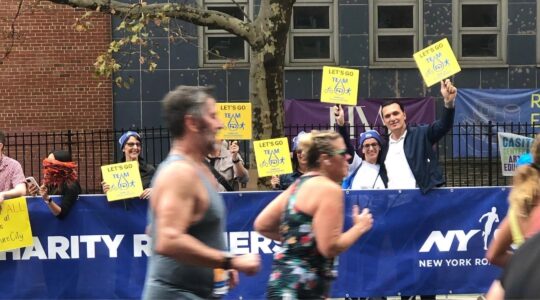BERLIN, July 25 (JTA) — Through a badly needed financial boost to concentration camp memorials, the government is committing Germans of the next century to carry on the process of remembrance. Michael Naumann, cultural adviser to Chancellor Gerhard Schroeder, said last Friday that funding to memorials “at authentic locations” will increase from $16 million in 2000 to $27 million in 2003. Among them are Dachau, Buchenwald, Ravensbrueck and Sachsenhausen. Directors of several memorials have long warned that their archives and exhibitions are deteriorating through overuse, lack of protection and understaffing. In addition, some sites in the former East Germany are digging themselves out from decades of Communist influence on their presentation of history. Among the sites to be funded are Berlin’s “Topography of Terror,” a document center and exhibit about the history of the SS; the House of the Wannsee Conference, where the Holocaust was planned; the Memorial to German Resistance; and a memorial concerning the Berlin Wall. The funding has nothing to do with the planned national Holocaust memorial in Berlin, to be located on a stretch of former no-man’s land that divided East and West Berlin. Critics have said the memorial, approved by the German Parliament last month, would attract graffiti and require extra protection. The memorial to the murdered Jews of Europe, designed by American architect Peter Eisenman, will cost an estimated $11 million. Also last Friday, Naumann asked Berlin to fulfill its promise to create a memorial to the 500,000 murdered Roma — also known as Gypsies. Mayor Eberhard Diepgen firmly stated his opposition to further memorials in Berlin after the Parliament approved the memorial to the Jews. Naumann said Friday that the Eisenman memorial did not exempt Berlin from its responsibility to the Roma. In the past, Diepgen had suggested that a memorial for them be created on the eastern fringes of Berlin, where the Nazis established a collection camp for them in 1936. Today, young extremists often hang out on the edges of Berlin. Attacks on foreigners have increased in the former East Germany in the past year.
JTA has documented Jewish history in real-time for over a century. Keep our journalism strong by joining us in supporting independent, award-winning reporting.





